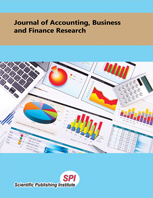The role of legal system in SME bank credit in ASEAN
DOI:
https://doi.org/10.55217/102.v19i2.826Keywords:
Bank credit, Contract enforcement, Legal system, SME finance.Abstract
This study aims to investigate the role of legal system in the access to bank credit of small and medium enterprises (SMEs) and explores the measures to improve legal system among the Association of South-East Asian Nations (ASEAN). By applying the ordinary least squares (OLS) method, the study examines the bank credit accessibility of over 12,000 firms across eight ASEAN countries, using the data collected from the World Bank’s Business Environment and Enterprise Performance Survey (BEEPS), in relation to each country's contract enforcement indicators. The estimated results reveal a significant positive relationship between contract enforcement and SMEs’ access to bank credit. Furthermore, the results show that long time consumption and large costs for contract enforcement reduces financing opportunities of SMEs. Additionally, the study finds that a country’s legal tradition does not impact the effectiveness of its contract enforcement. Implementing electronic filing systems and limiting times and costs for legal processes can enhance contract enforcement. Consequently, strong contract enforcement appears to encourage banks to increase SME lending, leading to higher SME bank credit in countries with efficient contract enforcement mechanisms. Enhancing contract enforcement can increase SME financing and consequently, will improve a country’s financial intermediation. These findings underscore the importance of contract enforcement including its duration and cost, in the context of SME financing and suggest ways to improve a country’s legal system to foster SME access to bank credit.


